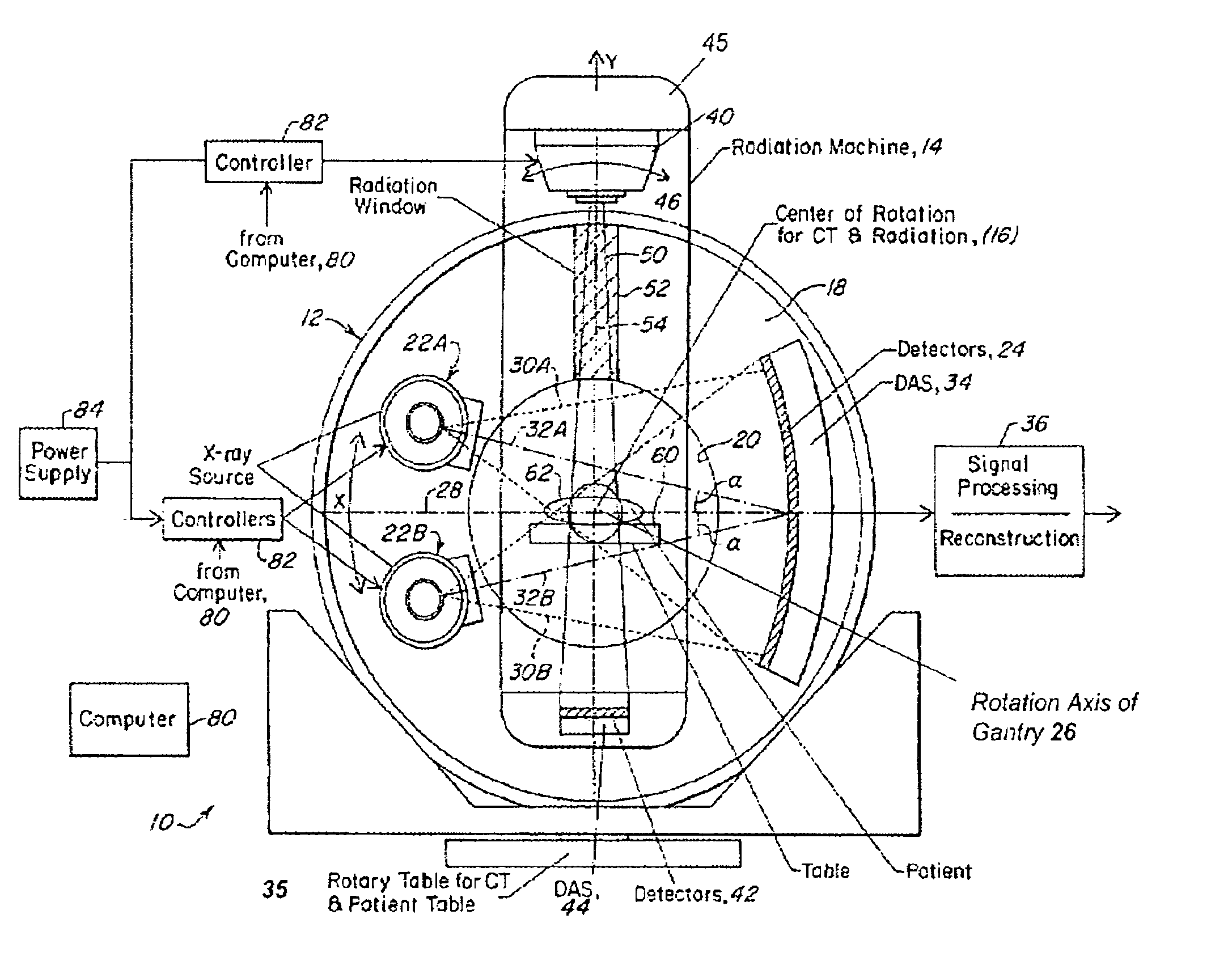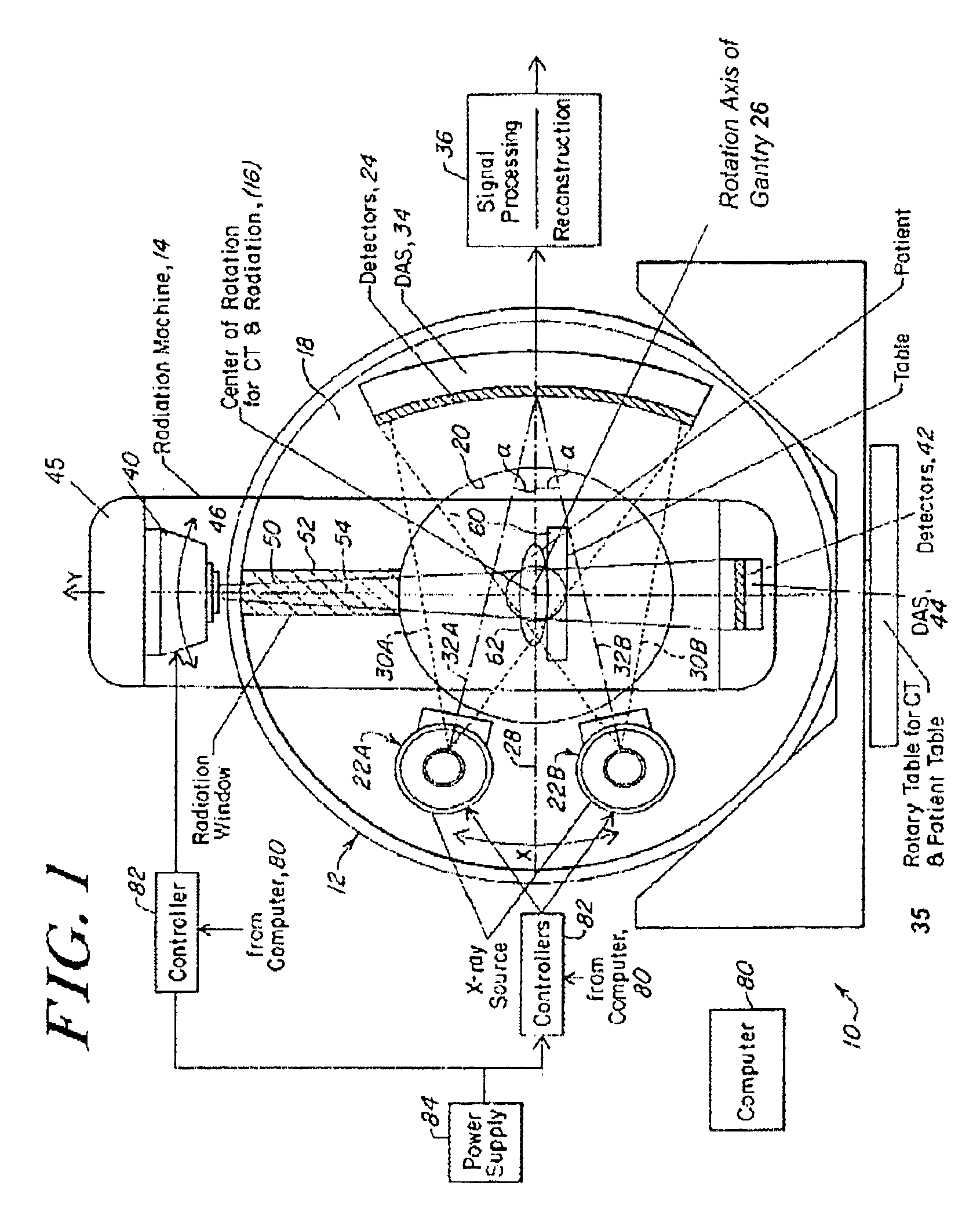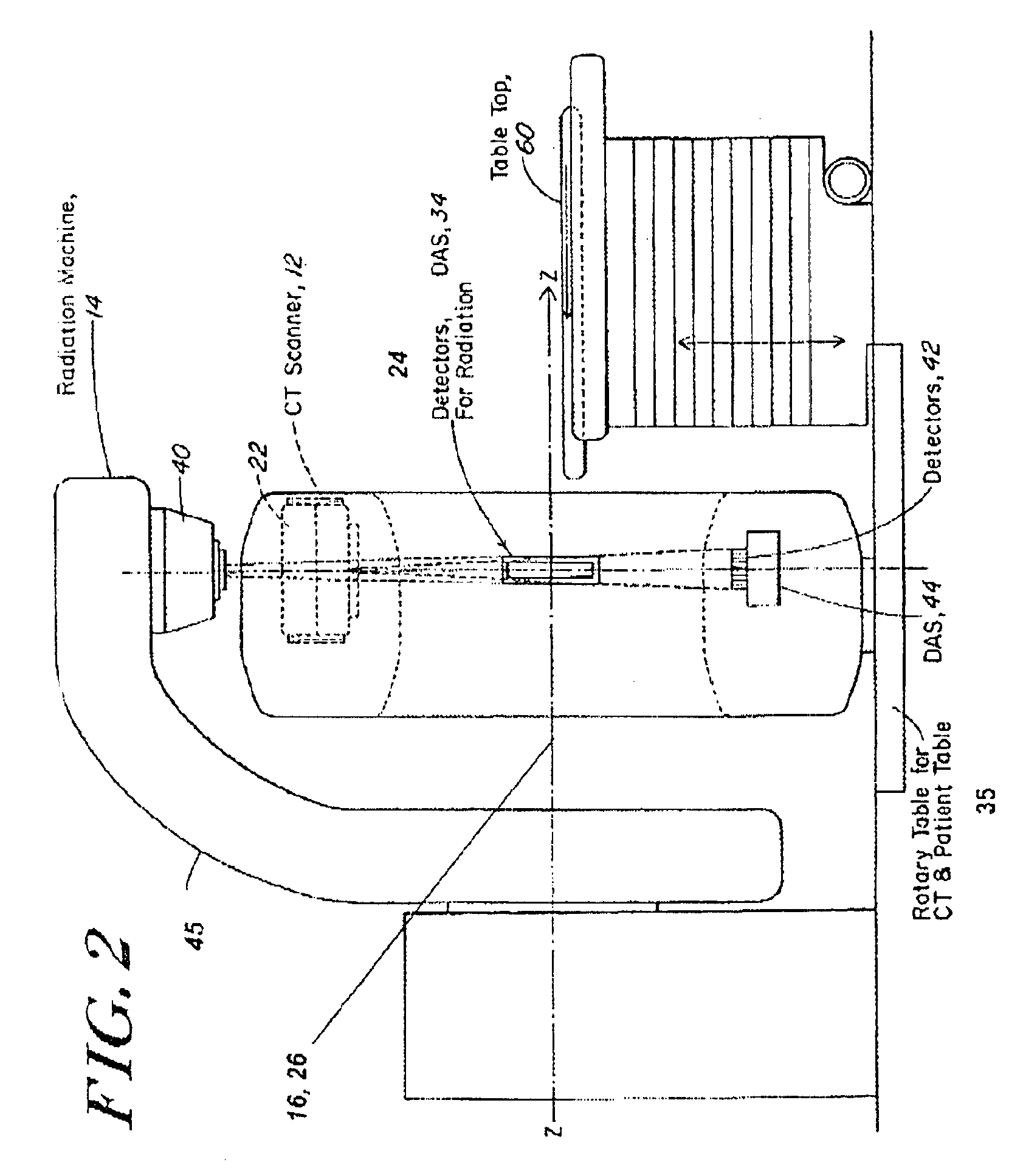Combined radiation therapy and imaging system and method
a radiation therapy and imaging system technology, applied in the field of combined radiation therapy and imaging system and method, can solve the problems of x-ray imaging source and image forming system, less than optimal image quality, and relatively expensive standard diagnostic ct scanners
- Summary
- Abstract
- Description
- Claims
- Application Information
AI Technical Summary
Benefits of technology
Problems solved by technology
Method used
Image
Examples
Embodiment Construction
[0035]In general, the system combines a CT X-ray imaging system for providing the functionality of the simulator, and a high energy radiotherapy machine. The X-ray imaging system can be used for both planning treatment and subsequently used during treatment. The X-ray imaging system is preferably a high resolution imaging system that can create images using CT reconstruction techniques, as well as stationary and scout views. Preferably, the stationary and scout views can be stereoscopic views for determining the position of the target region relative to and / or within a region of interest.
[0036]The preferred system is shown in FIGS. 1 and 2. In the system 10, the CT imaging subsystem 12, and the therapy radiation subsystem 14 are mounted for rotation about the same isocenter 16.
[0037]The imaging system 12 includes a rotatable gantry 18 having a patient aperture 20. A pair of X-ray sources 22A and 22B (or moving electron beam source) and a detector array 24 are fixedly mounted on the ...
PUM
 Login to View More
Login to View More Abstract
Description
Claims
Application Information
 Login to View More
Login to View More - R&D
- Intellectual Property
- Life Sciences
- Materials
- Tech Scout
- Unparalleled Data Quality
- Higher Quality Content
- 60% Fewer Hallucinations
Browse by: Latest US Patents, China's latest patents, Technical Efficacy Thesaurus, Application Domain, Technology Topic, Popular Technical Reports.
© 2025 PatSnap. All rights reserved.Legal|Privacy policy|Modern Slavery Act Transparency Statement|Sitemap|About US| Contact US: help@patsnap.com



